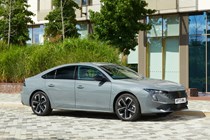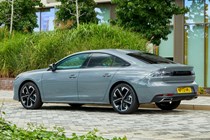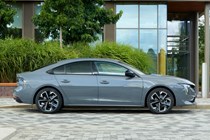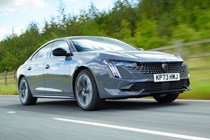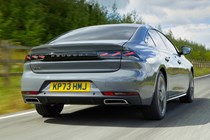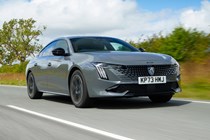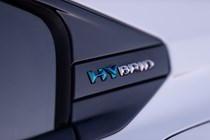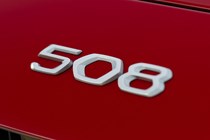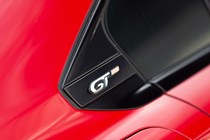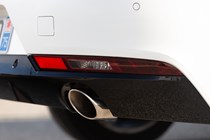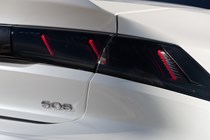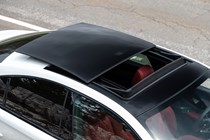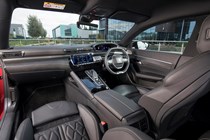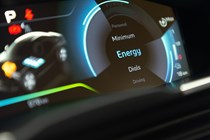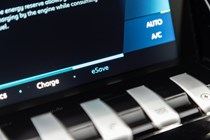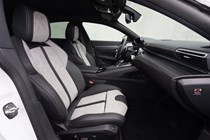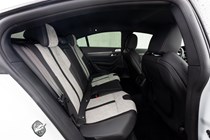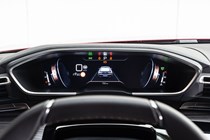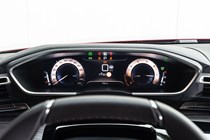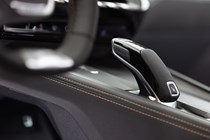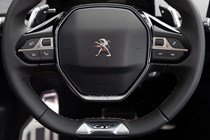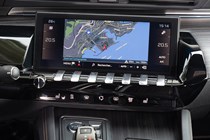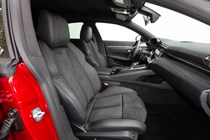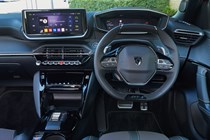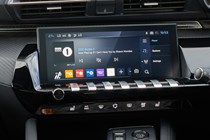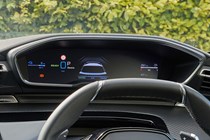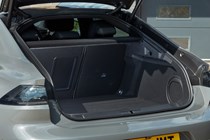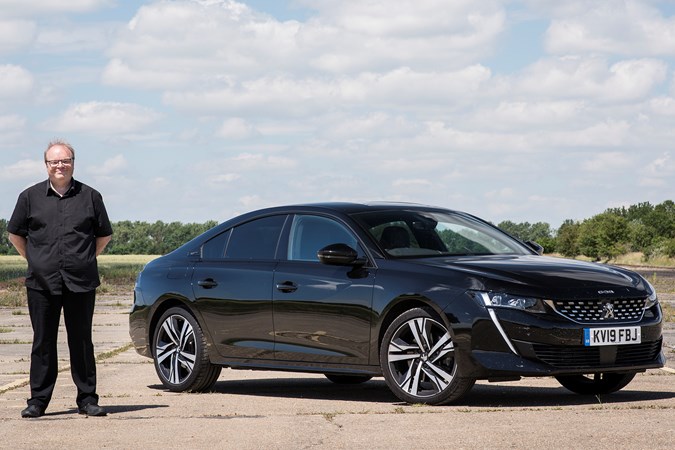
Peugeot 508 long-term test
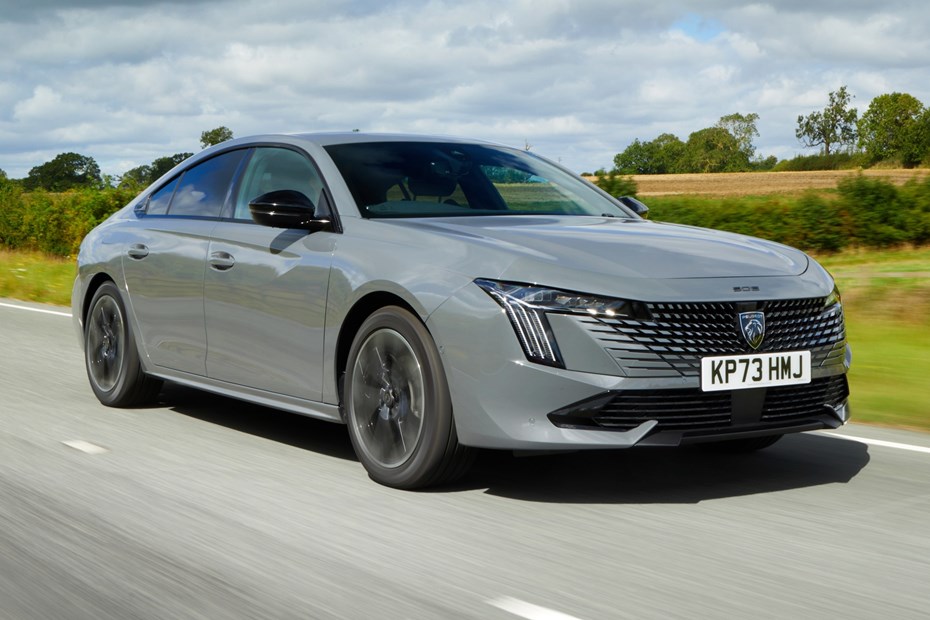
Update 1: Welcome
Parkers Editor Keith Adams is running a Peugeot 508 over six months to see if it really is as good as it looks. The signs would suggest that it is.
The second-generation 508 has already made a much larger impression in the UK thanks to its dramatic styling and move to a five-door Fastback layout from more conventional three-box saloon. It’s at the forefront of Peugeot’s renaissance, much of which has been built up on the back of the sharply-styled 3008 and 5008 SUVs. But where the 508 Fastback seems to making headway is with executive car buyers looking something a little bit different from the establishment choices.
Why we chose petrol
Peugeot expects the proportion of petrol versus diesel 508s to increase over the last model, and it’s offering two flavours of its 1.6-litre Puretech petrol – 180 and 225hp versions. We’re plumping for the more powerful of the pair because even though its on-paper acceleration figures aren’t that much better than the 180, it promises a more relaxing drive on longer journeys.
Our 508 is in the desirable GT Line spec, and finished in Nera Black metallic (a £575 extra). Other than that, it’s a completely standard-spec car – which tells you two things: the GT Line package is nothing if not comprehensive, and that I’m really not looking for much more from a car. And the one thing that the amount you spend on it doesn’t affect the car’s major selling point – its good looks.
What you get for your money
The GT-Line comes packed with a a huge amount of standard features, including:
- Three Isofix child seat mounting points
- Drive Assist Pack Plus: Adaptive Cruise Control and lane positioning assist
- Active Suspension
- Driver alert attention
- Speed sign recognition and recommendation
- Keyless entry and push-button start
- Peugeot i-Cockpit with user-selectable instrumentation
- Nappa Mistral leather seats
- Driver and front passenger massage function
- Automatic dual-zone air conditioning
- Electric tailgate
- 180-degree colour reversing camera and sensors
- Self-levelling full LED headlights with cornering function
- Apple CarPlay
- USB socket x 2
- Smartphone charging plate
- Automatic windscreen wipers
All of a sudden, that £36,000-plus list price doesn’t look that bad at all, does it?
Update 2: Performance and handling – what’s it like to drive?
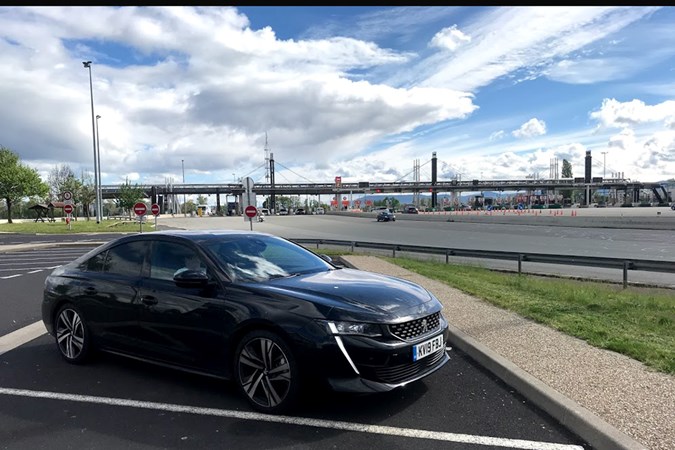
The 508 Fastback’s already taken us on a couple of long trips. The first to the South of France just after the car was delivered passed without a hitch – it was mainly Autoroute driving (above), where we learned that this car is a consumate long-distance cruiser thanks to its supportive seats with in-built massage function. Sadly, we didn’t get much off the beaten track on this run so didn’t learn much about the 508 Fastback’s dynamic prowess, but the first impressions were very positive.
However, the first (and early) talking point was the 508’s power delivery, which on the whole is very impressive indeed considering the car’s modest 1598cc engine capacity. It pulls smartly from low revs to its 5,500rpm power peak without any holes in its power and torque curves, and although it sounds a little flat, there’s no doubting its overall performance. The on-paper figures of 7.3 seconds for its 0-62mph time and 155mph maximum speed bely how relaxed it feels when you aren’t driving it hard.
The second talking point was just how much attention it attracts, and not just in France. I was stopped at the Dover-Calais crossing by French border guards, who simply wanted a closer look. They proclaimed this new car beautiful before asking me what it was. On the other side of the Channel, I was asked several times about the car, and plenty of people would come over for a closer look. One comment that amused me came from a young chap who jumped out of a 406 Coupe (one of the most beautiful volume cars ever made), made his way to the 508, looked through the driver’s window, and exclaimed, ‘i-Cockpit!’
Indeed.
Getting the 508 north of the border

However, a longer trip to the North Coast 500 via one of Scotland’s magnificent Old Military Roads (below) revealed far more about the 508 than a long and boring motorway run to Carcassonne. The car was driven three up, plus luggage and where possible, driven hard. The first thing to note is that while we were in Scotland, we passed the 5,000-mile mark, and the 508’s fuel consumption had evened out at 38.1mpg. Given that this is a 155mph car, and powered by petrol, that’s not a bad result – as people on the team will tell you, I’m far from the lightest-footed driver on the Parkers team.
What soon became apparent on our long drive was just how good the 508 is dynamically. Some early reports proclaim that it’s an okay driver’s car, but wouldn’t see which way a BMW 3 Series went. However, when laden, and given some challenging roads, ride and handling are properly impressive. With firm but compliant damping, decent ride quality, and excellent steering (too light on first acquaintence but brilliant at speed), it’s a very confidence-inspiring car. Stability seemed unaffected by load, too, which is a very impressive effort.
The further we drive the 508, the more we engaged with it, and those early criticisms started to melt away. In the end, the only downsides were its slow-witted transmission (it doesn’t like changing down quickly enough, even in Sport mode) and soft performance at low revs before the turbo kicked it. I suspect that given the plug-in hybrid drivetrain that’s promised for it, the 508 Fastback would put in a much more convincing performance on these challenging roads.
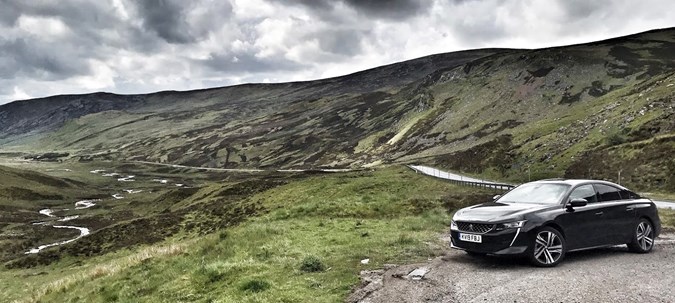
Overall, very impressive on the performance and ride/handling fronts. It’s not perfect, but very, very good. As the old saying goes, there’s no replacement for displacement. A nice, old-school 3.0-litre V6 would finish this car off nicely.
Update 3: Comfort and interior
The 508 is positioned as a five-door coupe, with its frameless side windows and steeply raked rear end. It’s a gorgeous-looking thing that’s probably more focused on style than accommodation. We picked the car up, and immediately, it was pushed into service as my week-day commuter car – 18-miles each way on A- and B-roads – and weekend plaything. Initial niggles centred on getting a decent driving position that allowed me to see all of the intruments without sitting too low in the car. Once that was sorted, it was a case of settling in and getting to grips with the car’s unconventional infotainment controls.
The front seats are pretty much as good as you get. And that’s saying something, seeing as this car replaced a Volvo V90 long-term test car as my daily runner. They are mult-adjustable and come with an in-built massage function, which makes my regular 250-mile runs to Cumbria a walk in the park. They are well-shaped. supportive and finished in the most lovely Nappa leather – this is a big departure from French car seats of old that invariably gave me backache.
On longer runs, the adaptive cruise control performed faultlessly (in many ways, it’s better that Tesla’s much vaunted but rather skittish Auto Pilot system), although newbies to Peugeots might hate the column control for it. As for the infotainment system, I used it a few times, then headed over to Apple CarPlay, which includes the brilliant (and Parkers award-winning) Waze navigation system and Amazon unlimited music. What more does one need?
Sub-par French quality? Forget that…
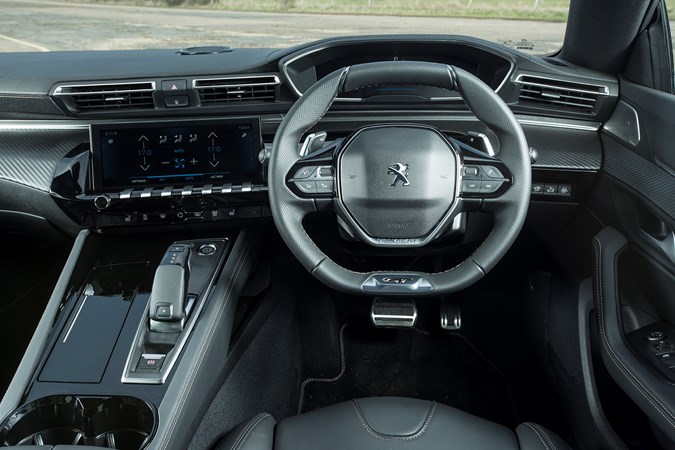
The 508’s interior is a high-quality place in which to spend time. There, I’ve said it. My GT-Line might be an all-black affair, but its exciting design and clever use of gloss and carbonfibre trim give this car an almost premium feel without the downside of being boring. All the touchpoints feel good, and the traditional French weaknesses of cheap-feeling switches and nasty trim materials are completely absent. That will come as a shock for anyone who’s not encountered Peugeot’s recent product lineup.
Room to charge your phone
The 508 has a floating centre console, which means that there’s an area behind it that contains a pad for wirelessly charging your mobile as well as two USB sockets. The pad works well, but the positioning of the USB sockets isn’t – and if you’re someone who regualrly plugs and unplugs, you’ll soon be cursing the rigmarole of feeling your way around this fairly inaccessable area.
I also found that iPhones don’t talk to 508s unless you use the very best charging leads. Buy a cheap one from a service station and you can forget about using CarPlay. A quick chat with Peugeot soon transpired that that I need a decent lead for it to work – which came as a relief after I’d pretty much given up all hope of using CarPlay on the move.
What’s it like for passengers?
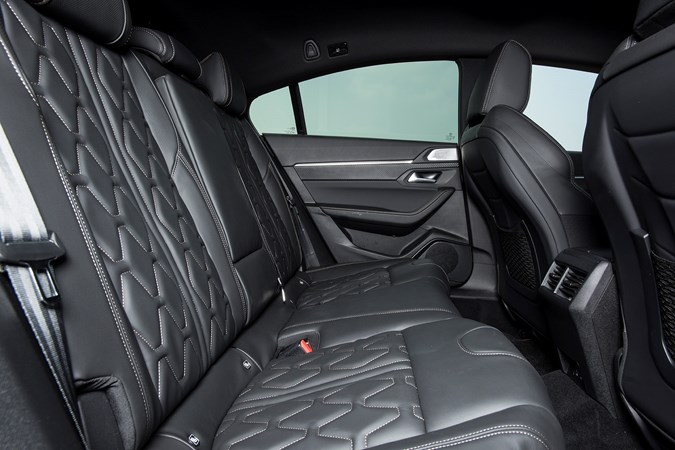
I’m quite lucky in that I don’t need to ferry many people around. But when I do, it’s likely to be one of my six-foot-plus sons, who need lots of room to accommodate long legs. As it happens, the Scottish trip (above) saw them take turns in the rear, and although they’re not particularly taken to moaning about their lot, it was clear that they were struggling for head and legroom.
Up front, there were no complaints, with acres of legroom and lots of rearward travel for the seats (another traditional weak point on French cars). The ride quality wasn’t commented on either, and from the driver’s perspective, the 508 rides really well considering it’s riding on 19-inch Augusta diamond-cut alloys.
And that sums up the 508 perfectly. It’s a very comfortable car that looks after its front-seat occupants supremely well. If you’re regularly shifting lots of people in your car, you might want to look elsewhere…
Update 4: Practicality
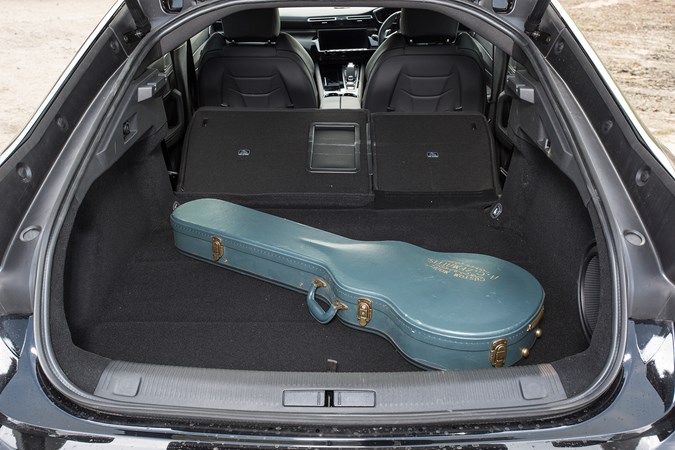
After the criticism of the rear-seat room this car offers, it’s a bit of a surprise to report that the luggage area is really quite impressive. The rear seats fold easily, and split 60:40 – and once lowered, the boot area is long and well shaped. It’s also good to see a curry hook in there to stabilise your shopping when you want to drive enthusiastically, and there’s also additional space under the false boot floor.
Although it’s not a deep boot, I’ve never struggles with taking it on holiday – packing for several people really does throw no fears for this car. I also love the kick opening facility for the electrically-assisted tailgate, although it took my son to show me that it’s fitted as standard.
Update 5: infotainment and i-Cockpit

One aspect of the 508 Fastback that always encourages comment from people is the small steering wheel and high-mounted instruments. Initially, it seems odd to sit low in a car, grab a tiny steering wheel that evokes memories of a 1970s Mountney, and peer over it to see the instruments, but after your first drive, you really will put it out of your mind. Or at least I did.
As for the i-Cockpit’s instrumentation, on the whole I like it. You can scroll through several different types of display until you get to the one that most suits you. Again, I played with it once or twice and then never really gave it a second thought. If I would have one criticism of it, I’d say that if you want it to permanently display trip details and range, you can’t have this alongside either of the sets of more traditional-looking dials. Shame, as they both look quite appealing unlike the more minimalist display you get when you want trip details.
That aside, the instruments are clean and clear and very nice to look at. Not sure why Peugeot chooses to have the rev counter sweep in an anti-clockwise direction – still, it reminds me of my old Fiat X1/9. If you’re considering a 508 Fastback, and allow this to put you off on a short test drive, I’d urge you to try it again to be doubly sure. It does work well and look good… but you’ll need time to adjust.
Below is a nice guide our colleages at CAR put together to show it in action.
…and the infotainment?
Although it’s driven primarily by an ornate set of piano keys, this is standard PSA fare. And none the worse for it. The media, fed via a pair of USB sockets, Apple CarPlay or Android Auto sounds crisp, clean and highly musical. The inbuilt sat-nav is quick and easy to use (although voice recognition could be better) and if you have a phone paired with it to feed it data, it also does live traffic mapping.
It doesn’t have the clean, classy look of a rival Volkswagen Group product, but it’s not far off – and a real improvement over what PSA cars used to offer. It’s also miles better than Renault’s R-Link or Ford’s SYNC systems, which seem just a little fussy in comparison.
I’m not a massive fan of touchscreens in general, so the screen-driven temperature sliders for the climate control systems are something I have to put up with, but otherwise it’s all good. One idiosyncrasy is the need to use the highest quality phone cables to connect it with – I initially thought CarPlay wasn’t functioning, but ditching my generic cable for an Apple one had it working happily…
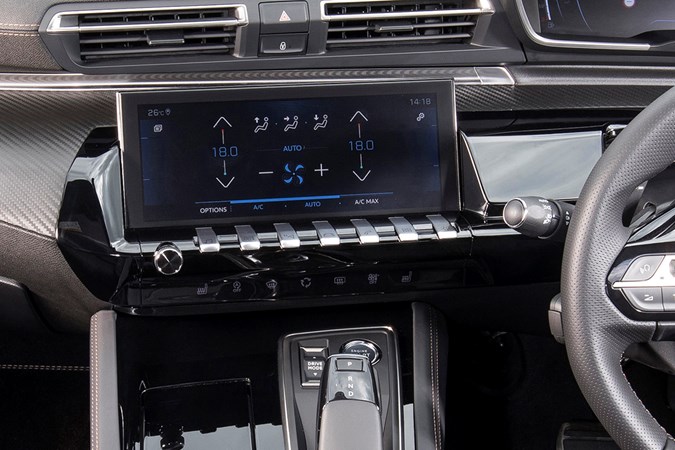
Update 6: Petrol vs diesel
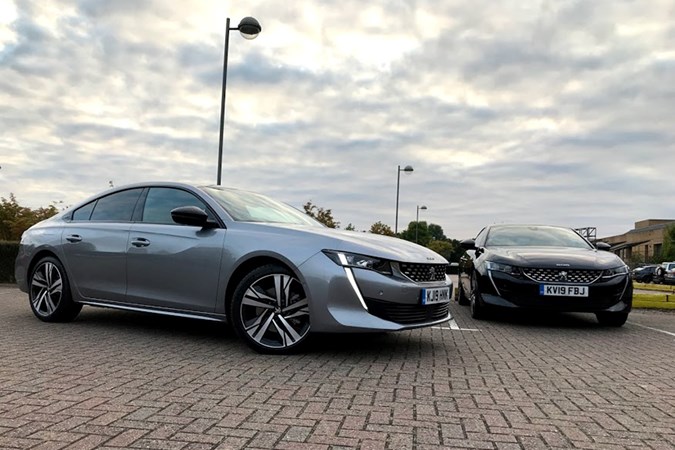
For comparative purposes, I spent a week in a Peugeot 508 Fastback BlueHDI 180. Although diesel’s grip on this sector of the market is starting to slip, it’s still the go-to choice for many buyers – especially company drivers. And with good reason – the sheer volume of negative stories driving people away from diesels and into EVs and PHEVs is alarming right now. In in the case of the Peugeot 508 Fastback, one can only conclude this is a bit of a tragedy.
So, why’s that then? After all, I’ve already said that the 1.6-litre turbocharged petrol in my GT-Line 225 delivers a very effective balance of performance and fuel consumption. Over the past 13,000 miles, it’s averaged 38.1mpg and it will make 155mph in Germany. It’s also reasonably refined, easy to drive, and largely well-matched with its EAT8 automatic transmission. The thing is, if you don’t like filling stations, the 508 BlueHDI 180 makes even more sense – during the week I had it, I averaged 50.1mpg, including the obligatory weekend run to the Lake District. So you get an easy 500-mile range between refuelling, unlike my petrol, which will just about top 400.
Over the course of a year, that makes for a tidy saving in your pocket, too. And although diesel is currently a few pence more expensive per litre at the pumps, the price difference is not enough to make the financial case for diesel not to stack up. In terms of taxation, it also looks better for diesel – the BlueHDI attracts 11% BIK and is liable for £185/£370/£416 monthly tax liability for 25, 40 and 45% tax payers in the 2020/2021 tax year. That compares with £194/£382/£432 for the 225hp petrol version. That all adds up.
But it’s not all about money, it it?
Well, no. As you’ll have already read above, I really like the way the 508 Fastback drives. The ride and handling are well judged, and the steering is pin-sharp and well-weighted. The good news is that this is also very much the case with the BlueHDI version, which feels all-but identical to the petrol model on the road and through the wheel. Of course, you get a typical diesel rattle at tickover, and overall refinement (if not levels of noise) is worse, but once underway, the diesel pulls more strongly from low revs, and feels less ‘peaky’ on the road.
You give up a little in terms of outright performance with the diesel – it’s a second slower from 0-62mph for instance – and if you’re a B-road regular, you might find it slightly less rewarding to snick through the gears. But away from that, the diesel makes a very strong case for itself, especially on the motorway, where it’s quiet, long legged, and a mere flex of the toe from serious mid-range acceleration.
I never thought I’d say it, but as an overall package for real-world driving on UK roads, the diesel gets the nod over the petrol. But only just.
Update 7: Verdict – what did we find?
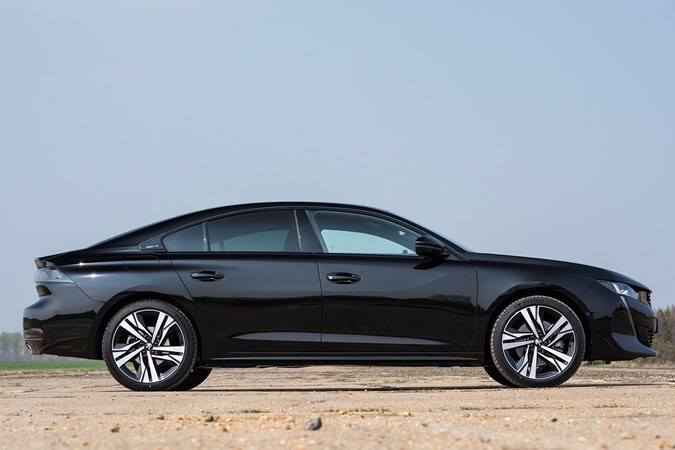
I’m nine months and 13,000 miles in and the 508 continues to impress. Look at that photo above and tell me it’s not a great looking car – if you do, I’ll send you to Specsavers. Even if it weren’t great to drive, it would be a desirable (albeit cramped) family car that should appeal to anyone who wants a car that makes them feel good, while avoiding the more obvious premium-market choices.
We’re still a few months away from the end of our test, so stay tuned for updates. I’ll be covering its equipment and rivals. But right now, this is where I stand with the 508 after a decent amount of time and miles spend with it. But in a nutshell, it’s a recommended choice, with one or two caveats.
Engine
The turbocharged 1.6-litre power unit delivers strong performance and surprisingly good fuel consumption. If you’re a gentle and relaxed driver, you’ll find it progresses nicely and with little effort. Push harder and it’s slightly less convincing because of its sometimes-slow automatic transmission and off-boost turbo lag. It’s quiet, refined, undistinguished and probably the least impressive aspect of this car.
Handling
With its wide tyres, big wheels and active damping control, this is a car that gets better the harder you drive it. Steering response is very impressive, and it feels very stable and assured in corners. It’s front-wheel drive, but doesn’t have any of the compromises that you might expect – in 10,000 miles, it’s never felt anything other than fully in control.
Ride and comfort
You’d expect it to have a lumpy ride, but in reality, it’s a very controlled and impressive effort. It’s not the softest-riding car in its class (try a Mercedes-Benz C-Class or Skoda Superb if that is your thing), but rarely is it ruffled by typically-British A- and B-roads. The drive modes don’t really make that much different to ride comfort, so you may as well leave it in Sport and enjoy a sharper throttle response.
Fuel economy
Some people may bemoan an average fuel consumption of 38.1mpg as being not that impressive, but I think that’s more than acceptable for a car of this size and performance that’s powered by petrol. Okay, so that’s more than 50mpg for the 180hp BlueHDI version, and the diesel is a more relaxing overall drive, with more effortless performance. It might not be quite as rewarding to drive on B-roads, but the diesel is probably the better all-rounder.
Should you buy a Peugeot 508 Fastback?
Our 508 Fastback comes in at £36,995 in pure cash terms (the gorgeous Nera Black metallic paint is a £575 option), which on the face of it seems like a lot of money for a Peugeot. That puts it in direct comparison with a BMW 320i, which lacks the Peugeot’s toys and (arguably) amazing styling – but comes with a big dollop of badge kudos. If that’s important to you, you’re probably not reading this review anyway.
I would recommend making sure your family and friends fit in the back, though – as it’s far from roomy, and something like a Volkswagen Arteon (which should appeal to the same buyers) is far more commodious, especially in the back. I’m intrigued to see how one of the Chinese-market 508L Fastbacks (below) would work out with their 55mm longer wheelbase and improved rear leg room.
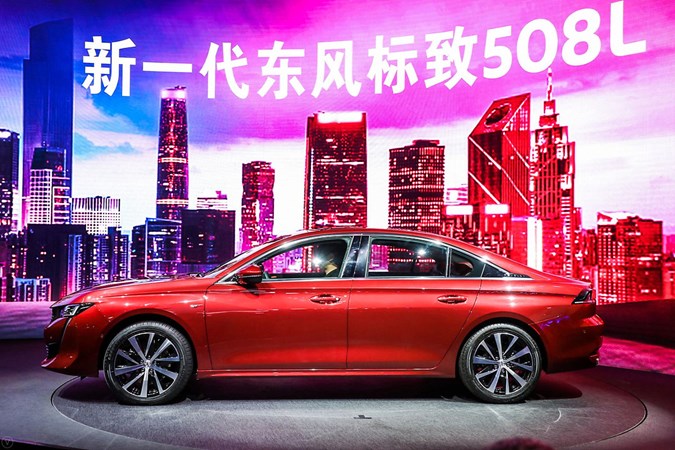
I’d probably also recommend taking the 225 petrol over the 180 (petrol), as it’s not much more expensive, uses no more fuel, and is usefully quicker (and easier to drive). But it’s a tougher decision for the question of petrol vs diesel, as the BlueHDI 180 is such a good overall package.
With a sensible Parkers hat on, I’d say go for the diesel as things stand right now. Of course that could all change on the whim of government tax changes. Whichever 508 you choose, it’s an exceptionally likeable car – and what I’ll never forget about it is just how much attention it attracted. It’s a great-looking car, harking back to the days when Peugeot was incapable of producing an inelegant large car, and people clearly appreciate its fabulous looks.
I know I do.
Let us know if you agree with Keith’s experience of 13,000 miles with the 508. Would you buy one over a 3 Series, A4 or C-Class?



